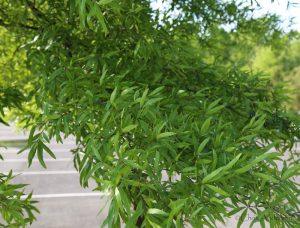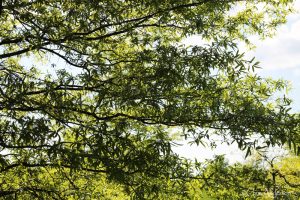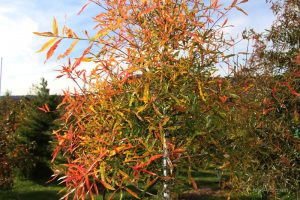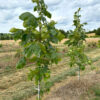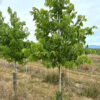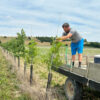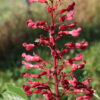 ‘Forest bathing’ began in Japan in 1982 when it became part of the national health program. It consists of a meditative stroll through the woods with a focus on really hearing, seeing and sensing the woods such as by noticing the textures and colors of trees, the motion of branches and listening to the sounds of birds and other wildlife who share the space. It is catching on in the U.S. and, as anyone who gets out in nature regularly can attest, is a simple way to feel better physically and mentally. Medical science is also realizing the benefits of forest bathing by lowering blood pressure, stress hormones and blood glucose levels. One of the best things about this simple therapy is that it is free and available to everyone.
‘Forest bathing’ began in Japan in 1982 when it became part of the national health program. It consists of a meditative stroll through the woods with a focus on really hearing, seeing and sensing the woods such as by noticing the textures and colors of trees, the motion of branches and listening to the sounds of birds and other wildlife who share the space. It is catching on in the U.S. and, as anyone who gets out in nature regularly can attest, is a simple way to feel better physically and mentally. Medical science is also realizing the benefits of forest bathing by lowering blood pressure, stress hormones and blood glucose levels. One of the best things about this simple therapy is that it is free and available to everyone.
However, for those who don’t have easy or regular access to forests or the mobility for a proper forest bath, the willow oak may provide a similar benefit simply by sitting nearby and gazing up into its canopy watching its leaves which move in a graceful and mesmerizing fashion with the slightest breeze.
Shaped like willow leaves, the willow oak (Quercus phellos) is actually not related to willows and instead, belongs to the red oak section of the oak family (genus Quercus, subgenus Quercus, section Lobatæ). The leaves are long (two to five inches), smooth and tipped with tiny bristles. They are alternate and even though most guidebooks note them turning yellow in the fall, at White House Natives, they tended to be more of a lovely crimson-orange last autumn.
Willow oaks frequently line city streets and urban landscaping including parking lots as they are long-lived, don’t require much care, are virtually pest- and disease-free and are shallow-rooted, making them easy to transplant and they don’t tend to buckle asphalt as much as other medium to large hardwoods. They still need plenty of space to grow as they typically reach heights of 50-80 feet (max. 120 feet) with pyramidal shaped canopies when young and maturing into an oblong shape at maturity. In lower-light situations, they benefit from light pruning to encourage a balanced, strong and full canopy.

Due to their shallow roots, the trees do not react well when additional soil is added after they are established. As little as one to two inches of soil over their roots can disrupt the ability of the tree to access water
They require regular deep watering, particularly when getting established, and can benefit from staking when transplanted at smaller caliper sizes. They can tolerate a wide range of soil types but benefit by more acidic pH levels but are tolerant of drought and air pollution. To be the happiest, they enjoy regular water and grow naturally in rich lowlands, swamp, river bottoms, floodplains and rich sandy uplands.
When planted in full sun, they create valuable shade in park and urban settings and their acorns tend to be shallow and more saucer-shaped than other oak trees. These acorns are relished by squirrels, raccoons and deer and in more rural settings and in the forest, acorns provide the bulk of winter food for wild turkeys.

In its most southern range of Mississippi and Arkansas , the willow oak can occasionally remain evergreen throughout the year.
In conclusion, if you need to relax, you might try the new therapy called tree bathing. Most people who love and are fascinated by trees would agree that getting out on a trail to makes them feel better without needing to cite medical studies. Trees are not only necessary for our survival by sequestering carbon, helping keep our water ways clean of sediment and pollution and producing clean air but just may be key to our mental well-being. So go ahead, take a walk in the forest or try placing a chair, hammock or blanket underneath and commune with a favorite tree.
Chris Anderson, Executive Director
White House Farm Foundation
1917 Kauffmans Mill Road
Luray, VA 22835


